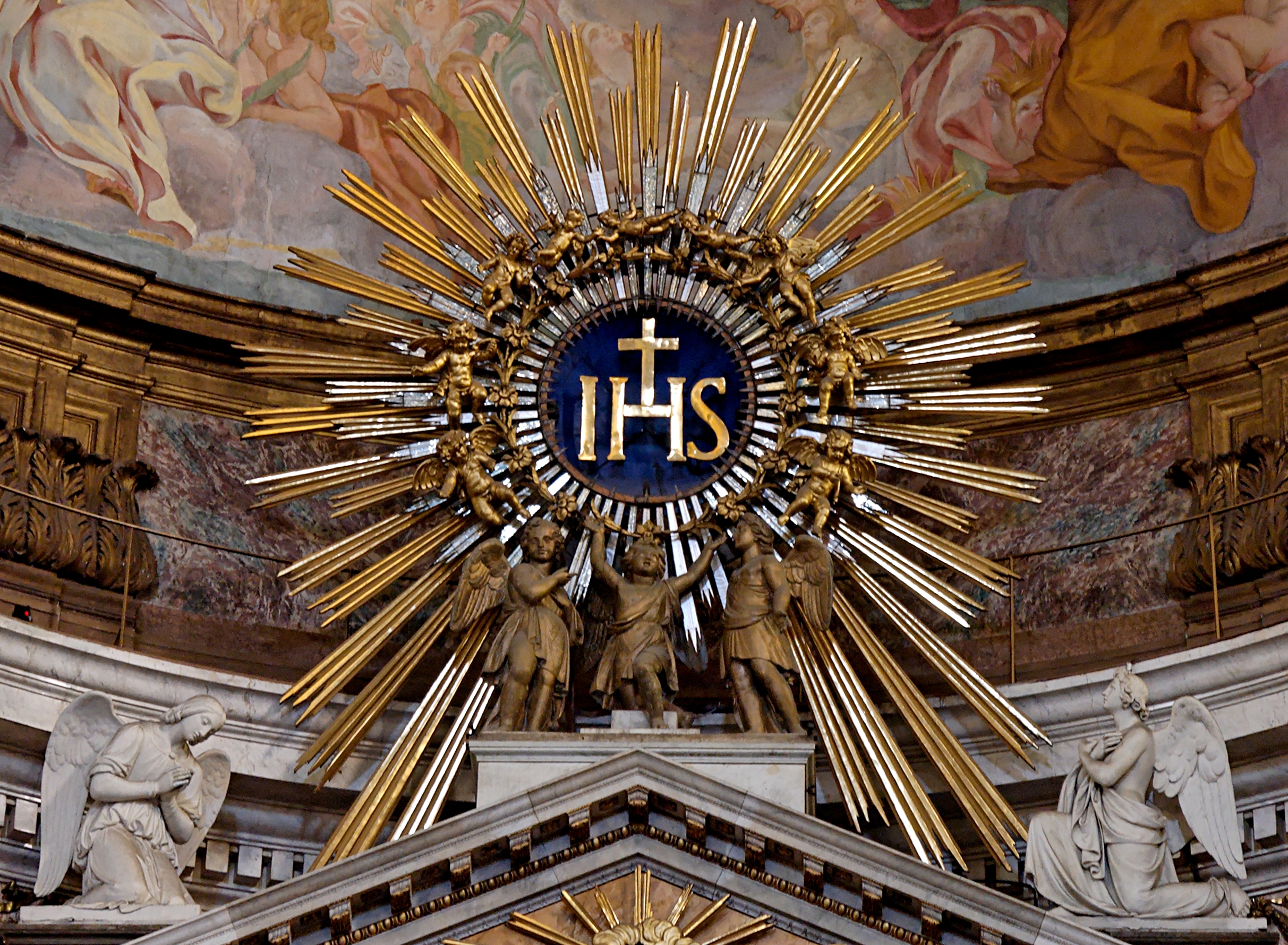
Today, October 7th, is the Memorial of Our Lady of the Rosary. October is in fact that month of the Rosary. You will hear it said that it commemorates the victory of a Christian fleet against an invading Muslim force at the Battle of Lepanto. More than anything, however, it commemorates the power of this prayer to Jesus through Mary, as exemplified by the victory given to that outnumbered fleet.
The Rosary, of course, has a long history ante-dating this event battle. Prayer beads had long been used with various styles of prayer from very early times. Indeed, they are also found in non-Christian cultures. Among Christians, as early as the seventh century, there was a practice among the laity to recite 150
Hail Marys, in imitation of the 150 Psalms, which were sung by monks throughout the week. It is out of this "Psalter of Mary" that the Rosary was to emerge, and it is still sometimes called by this name.
At its core, praying the Rosary consists of three sets of five "decades." These decades consist of one
Our Father, ten
Hail Marys, and one
Glory be. During each decade, one meditates on a Mystery (that is, a revealed truth) about Our Lord (or his Blessed Mother, those these mysteries be seen as an extension of the mystery of Our Lord, as they pertain to God's love for her). Offering a rosary is understood to consist in essence of praying five such decades. Nevertheless, various additions have been made to this prayer. I am not aware of any version of the Rosary where these decades are not preceded by an additional
Our Father and three
Hail Marys.
The beginning of the prayer varies according to local custom. In the United States (and I believe all of the English speaking world) the practice is to begin with the Sign of the Cross and the Apostles' Creed while holding the crucifix attached to the Rosary. In Rome, the practice is to begin with the opening words of the Divine Office: "Lord, open my lips. And my mouth will proclaim your praise. God, come to my assistance. Lord, make haste to help me. Glory be . . ."Hail, Holy Queen (
Salve Regina). This is usually followed by a collect (concluding prayer). Additionally, the
Litany of Loreto (about which more will be written on Saturday) can follow. Finally, the
prayer to St. Joseph might be made after the Rosary.
This certainly does not exhaust the possibilities of praying the Rosary, or the adaptations which can be made by an individual or group. For instance, one might desire to pray the
Memorare before the Rosary in order to better set a prayerful mood. Moreover, various prayers may be added, for vocations, peace, etc
It should not go without saying that in 2002 John Paul II, in the Apostolic Letter
Rosarium Virginis Mariae, introduced five new optional mysteries for meditation during the Rosary, known as the Luminous Mysteries. These include 1) the Baptism in the Jordan; 2) the Wedding at Cana; 3) the Proclamation of the Kingdom and Call to Repentance; 4) the Transfiguration; and 5) the Eucharist.
It should be noted that this has caused a great deal of consternation among a number of traditionalists. The primary reason is that it appears to sever the practice from its roots as substitution or complement for the Psalter (i.e., as "Mary's Psalter"). Nevertheless, one could argue that there are already various chaplets offered using Rosary beads anyway. We can see this simply as another of those chaplets.
Regarding the Rosary, we find the following text in the
Enchiridion no. 17 sec. 1:
- A plenary indulgence is granted to the faithful who
- 1. devoutly recite the Marian rosary in a church or oratory, or in a family, a religious community, or an association of the faithful, and in general when several of the faithful gather for some honest purpose.
- 2. devoutly join in the recitation of the rosary while it is being recited by the Supreme Pontiff and broadcast live by radio or television.
- In other circumstances, the indulgence will be partial
Praying the Rosary under these circumstances is indeed one of six ways in which a member of the faithful may gain a
plenary indulgence on any day. The other ways would include: 1) devoutly reading Sacred Scripture for 30 minutes; 2) devoutly praying before the Blessed Sacrament for 30 minutes; 3) praying the Stations of the Cross; 4) praying the
Akathistos hymn under the same circumstances as the Rosary; 5) praying the
Paraclesis service under the same circumstances
In this month of October, and on this Feast Day, we have a great opportunity to renew or take up this practice for the first time.










